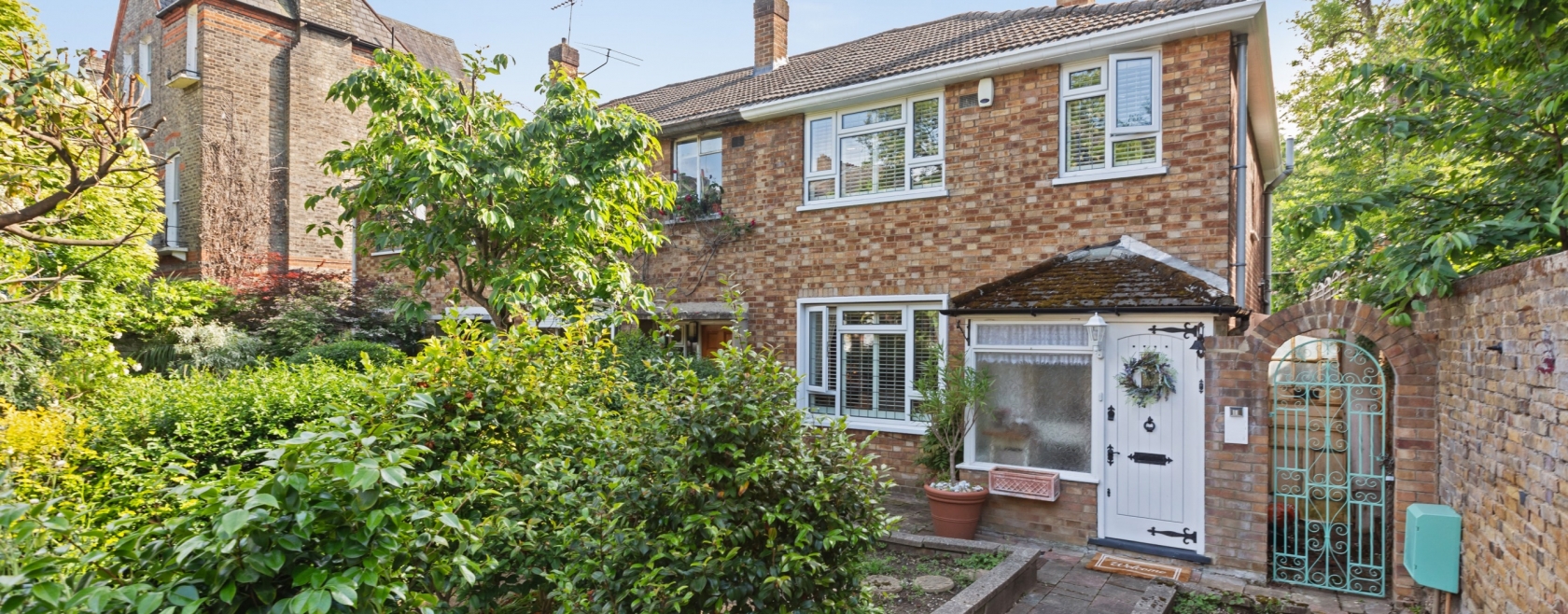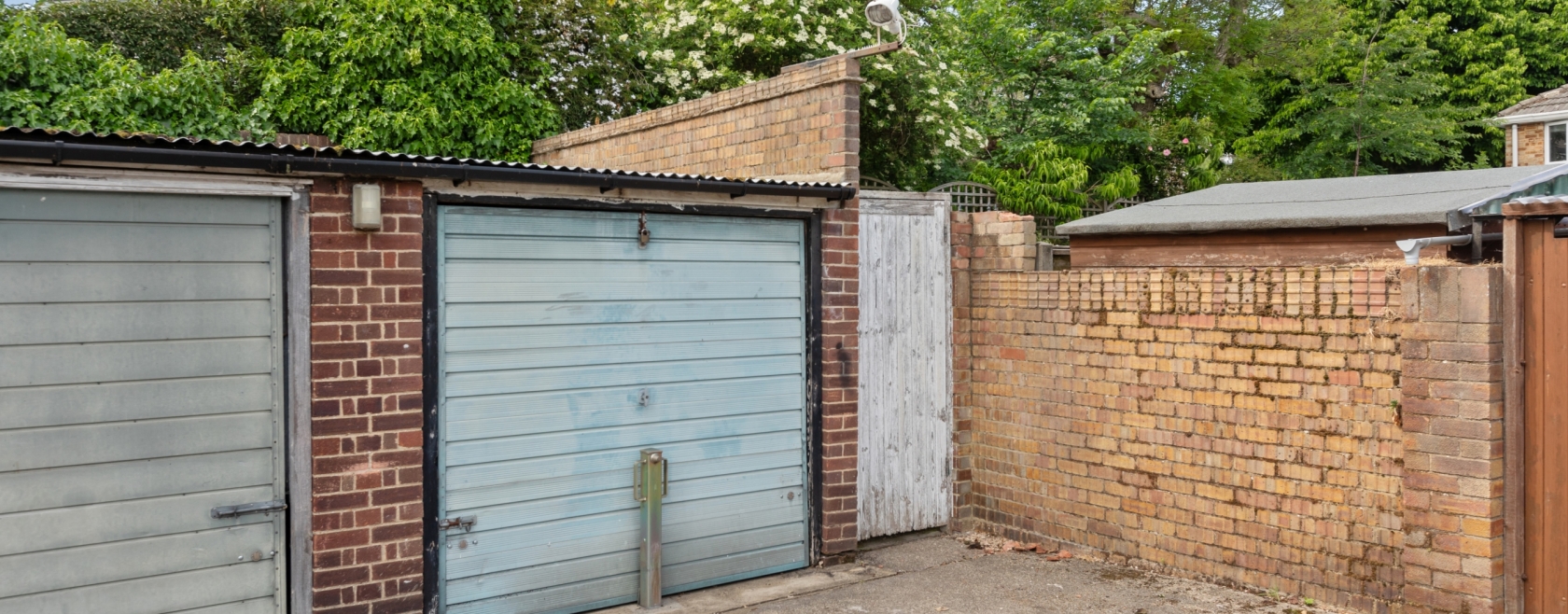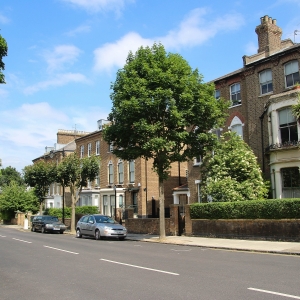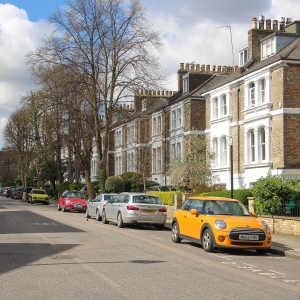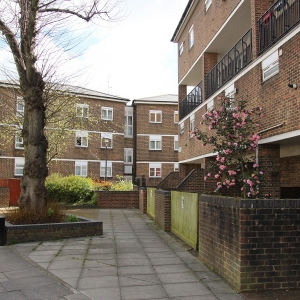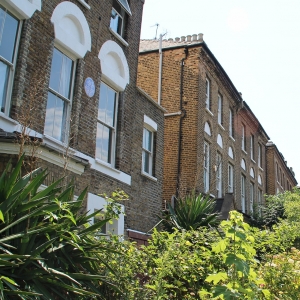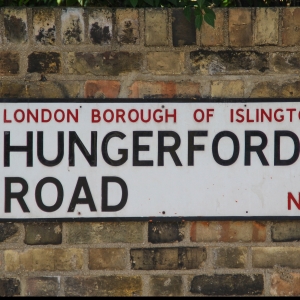Middleton Grove, Hillmarton Conservation Area. London N7
£975,000
A bright and spacious privately built, three bedroom, two storey end of terrace freehold family house, quietly and conveniently located in a small street, forming part of the Hillmarton conservation area. Within easy reach of Caledonian Road tube (Piccadilly Line), Overground and multiple bus routes. The house, built in 1958, has a neat 24' front garden, with an even larger well maintained, 57' South west facing rear garden, accessed from a bright conservatory. A large living area including Kitchen diner extends to 26'7". The house also benefits from a private garage located directly behind the garden. Gas centrally heated. Double glazed throughout. Freehold with off street and on street parking.
Living room 15' x 11'6" Large double glazed windows overlooking front garden
Kitchen diner 17'6" x 11'2 Fully fitted with ample dining/entertaining space leading to:
Conservatory 16'4" x 9'6" Double doors from dining room and then double doors to garden
Bedroom 15'1" 10'8" Fitted wardrobes
Bedroom 11'3" x 10'6" Fitted wardrobes
Bedroom 8'2" x 6'8" Double glaze casement window
Bathroom 9' x 6'9" White suite, bath plus shower cubicle. Casement window
Entrance hall 15'2" x 5'10" (at max) open to staircase
Front garden 23'8" x 23'
Rear garden 57'6" x 19'3" Lawn and paved patio area.
Garage 17' x 8'7" Up and over door.
Tenure: Freehold
Council tax: Band E (Islington Borough)
EPC Band D (potential C 66/82)
Living room 15' x 11'6" Large double glazed windows overlooking front garden
Kitchen diner 17'6" x 11'2 Fully fitted with ample dining/entertaining space leading to:
Conservatory 16'4" x 9'6" Double doors from dining room and then double doors to garden
Bedroom 15'1" 10'8" Fitted wardrobes
Bedroom 11'3" x 10'6" Fitted wardrobes
Bedroom 8'2" x 6'8" Double glaze casement window
Bathroom 9' x 6'9" White suite, bath plus shower cubicle. Casement window
Entrance hall 15'2" x 5'10" (at max) open to staircase
Front garden 23'8" x 23'
Rear garden 57'6" x 19'3" Lawn and paved patio area.
Garage 17' x 8'7" Up and over door.
Tenure: Freehold
Council tax: Band E (Islington Borough)
EPC Band D (potential C 66/82)

PROPERTY LOCATION
STREET INFO
Hungerford Road is a long straight road parallel to Camden Road N7 but with a fraction of its traffic. It runs north east from York Way to Hillmarton Road and gives access to Hartham Road, Middleton Grove and Beacon Hill.
The architecture is an unusual mix of housing, constructed over ninety years apart, mostly during the 1880s and 1970s. Notable from these eras. 1880s: invention of the electric light bulb, Charles Darwin, Golden Jubilee of Queen Victoria, Florence Nightingale, Sherlock Holmes and Britain's first Penny Black. 1970s: invention of microwave and video, platform shoes, hot-pants, drought, decimal currency, space hoppers and the Silver Jubilee of Queen Elizabeth.
If you prefer the period houses of the 1880s, they are mostly found on the northern side set back from the street behind mature gardens with grand entrances on raised ground floors (mostly wide semi-detached villas).
Those seeking the three and four storey modern blocks of the 1970s need to look to the southern side of the road. These were built by L.B. Islington in 1975 as quality maisonettes and many have been bought from the council and since re-sold. Camden Bus has been responsible for many of these sales over the years. In fact, each year we sell more flats in this one road than any other. Shows that it wasn't all bad in the 'Me Decade' of the 1970s.
Hungerford Road is lined with mainly lime trees and some rowan. There are also apple trees. Did you know that urban scrumping is a fast growing pastime in London? No need to take the unnecessary risk of climbing trees, just reach up to the lowest branches or wait for the windfalls. You could make chutney, jam, sauce, jelly or pie. Cider might be a bit too ambitious though as you need 15-20kg apples to make a gallon. But nothing ventured, nothing gained. For more info, here's an interesting link: www.independent.co.uk/life-style/food-and-drink/features/core-values-its-time-to-go-scrumping-1806788.html
During the 1600s the land around Hungerford Road was owned by the Halliday family. Margaret Halliday married Sir Edward Hungerford, who also gave his name to Hungerford Market, opened in 1682, a once thriving market selling fish, meat, fruit and veg. It was pulled down to make way for Charing Cross Station in 1864.
Sir Edward also gave his name to the Hungerford Bridge, a steel truss railway bridge, aka, Charing Cross Bridge, flanked by the more recent pedestrian bridges, aka, the award winning Golden Jubilee Bridges.
The architecture is an unusual mix of housing, constructed over ninety years apart, mostly during the 1880s and 1970s. Notable from these eras. 1880s: invention of the electric light bulb, Charles Darwin, Golden Jubilee of Queen Victoria, Florence Nightingale, Sherlock Holmes and Britain's first Penny Black. 1970s: invention of microwave and video, platform shoes, hot-pants, drought, decimal currency, space hoppers and the Silver Jubilee of Queen Elizabeth.
If you prefer the period houses of the 1880s, they are mostly found on the northern side set back from the street behind mature gardens with grand entrances on raised ground floors (mostly wide semi-detached villas).
Those seeking the three and four storey modern blocks of the 1970s need to look to the southern side of the road. These were built by L.B. Islington in 1975 as quality maisonettes and many have been bought from the council and since re-sold. Camden Bus has been responsible for many of these sales over the years. In fact, each year we sell more flats in this one road than any other. Shows that it wasn't all bad in the 'Me Decade' of the 1970s.
Hungerford Road is lined with mainly lime trees and some rowan. There are also apple trees. Did you know that urban scrumping is a fast growing pastime in London? No need to take the unnecessary risk of climbing trees, just reach up to the lowest branches or wait for the windfalls. You could make chutney, jam, sauce, jelly or pie. Cider might be a bit too ambitious though as you need 15-20kg apples to make a gallon. But nothing ventured, nothing gained. For more info, here's an interesting link: www.independent.co.uk/life-style/food-and-drink/features/core-values-its-time-to-go-scrumping-1806788.html
During the 1600s the land around Hungerford Road was owned by the Halliday family. Margaret Halliday married Sir Edward Hungerford, who also gave his name to Hungerford Market, opened in 1682, a once thriving market selling fish, meat, fruit and veg. It was pulled down to make way for Charing Cross Station in 1864.
Sir Edward also gave his name to the Hungerford Bridge, a steel truss railway bridge, aka, Charing Cross Bridge, flanked by the more recent pedestrian bridges, aka, the award winning Golden Jubilee Bridges.
PUBLIC TRANSPORT
Caledonian Road tube station Piccadilly Line
It takes 6 minutes 49 seconds to walk the length of Hungerford Road. Using our stop watch we timed a further 6 minutes 17 seconds to walk to Caledonian Road tube station (Piccadilly Line).
Various bus routes on Camden Road
Bus routes 29 253 N29 N253 N279
